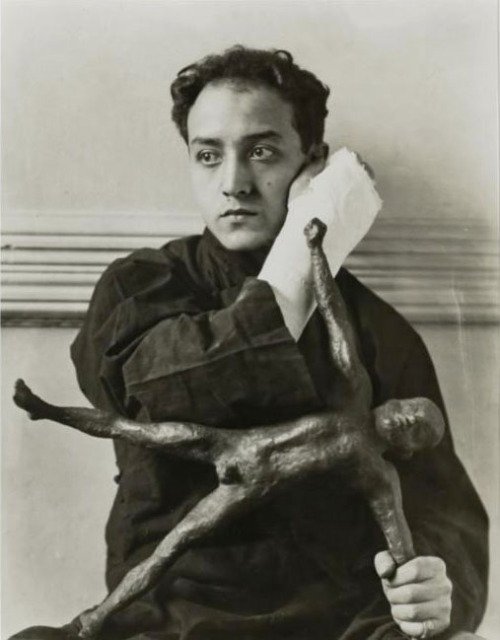Celebrating Asian American and Pacific Islander Heritage Month: Isamu Noguchi
Isamu Noguchi with his sculpture Glad Day, ca 1930, Photo: Berenice Abbott
Artist, furnishings designer, and landscape architect, Isamu Noguchi (1904 to 1988) straddled Western and Eastern cultures; born in Los Angeles to an American mother and a Japanese father. His father, Yone Noguchi, was an acclaimed poet who settled in the bohemian San Francisco Bay Area for seven years. He eventually traveled to New York City and met editor and writer Léonie Gilmour. After working on Noguchi's fictional book, The American Diary of a Japanese Girl, together, the two had an amorous relationship, resulting in Isamu Noguchi's birth. Though his parents soon separated, the younger Noguchi spent most of his childhood in Japan. At thirteen, he returned to the United States and attended high school in Indiana, going by the name Sam Gilmour.
Noguchi Coffee Table (IN-50) ca 1944
New York City beckoned him, where he enrolled as a pre-med student at Columbia University in 1922 and met Michio Itō, the Japanese pioneer of modern dance. Itō introduced him to avant-garde artists of the time and convinced him to reclaim his Japanese name. Noguchi took night courses in sculpture from Onorio Ruotolo, leaving college to pursue art full-time. After being awarded a Guggenheim Fellowship in 1927, he traveled to Paris, worked for modernist sculptor Constantin Brâncuși, and became friends with American sculptor Alexander Calder. In 1928, Noguchi returned to New York, and the following year he showed abstract sculpture in his first solo show at the Eugene Schoen Gallery.
Noguchi journeyed extensively throughout his life, experiencing the cultures of Europe, Asia, and Mexico. The encounters expanded his knowledge of art mediums and techniques. He went beyond fine art to explore product design, theatrical production, and environmental design. His furnishings ranged from abstract coffee tables for Herman Miller to ethereal Akari Light Sculptures fabricated from washi paper and bamboo. Through Itō, Noguchi met choreographer Martha Graham. They collaborated on contemporary theater sets for Frontier, Appalachian Spring, and Cave of the Heart, among other performances. On a larger scale, Noguchi created playgrounds, fountains, gardens, private courtyards, and civic spaces.



